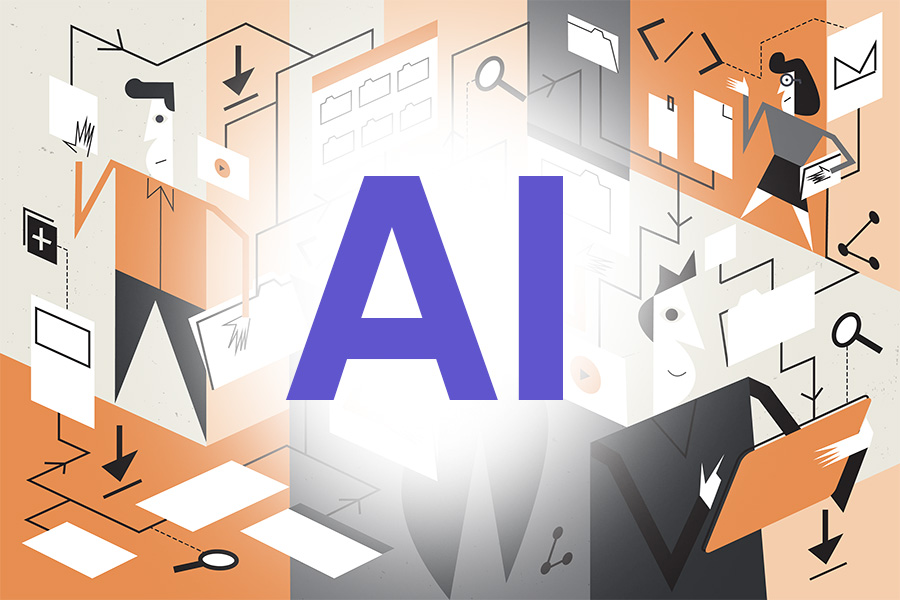
AI Revolutionises DAM
In the digital age, businesses and creative professionals handle an immense volume of digital assets, ranging from images and videos to documents and audio files. Digital Asset Management (DAM) software has emerged as a vital tool to organize, store, and retrieve these assets efficiently. However, with the increasing complexity and volume of data, traditional DAM systems face significant challenges. Enter Artificial Intelligence (AI) – a game-changer that is revolutionizing the DAM landscape. In this blog post, we'll explore how AI tools are influencing the development and capabilities of DAM software.
1. Enhanced Metadata Tagging and Classification
One of the most significant contributions of AI to DAM software is in the area of metadata tagging and classification. Traditionally, metadata tagging has been a manual, time-consuming process, prone to human error and inconsistency. AI tools, particularly those using machine learning and natural language processing (NLP), can automatically generate metadata by analyzing the content of digital assets.
For example, AI algorithms can analyze an image to identify objects, settings, and even emotions, and then tag it accordingly. This automation not only accelerates the tagging process but also ensures greater accuracy and uniformity. It also helps in identifying and categorizing assets that might have been overlooked in manual processes.
2. Improved Search and Retrieval
DAM systems are only as good as their search functionality. AI enhances search capabilities by making them more intuitive and user-friendly. Through technologies like natural language processing (NLP) and image recognition, AI-powered DAM systems allow users to search for assets using natural language queries or by uploading similar images.
For instance, a user looking for images of "sunsets over mountains" can simply type this phrase or even upload a reference image, and the AI system will retrieve relevant assets, even if the exact keywords are not present in the metadata. This capability significantly reduces the time and effort required to find specific assets.
3. Automated Content Analysis and Insights
AI tools can do more than just organize and retrieve assets; they can also analyze them to provide valuable insights. For example, AI can be used to analyze video content to detect brand logos, identify spoken words, and even assess the emotional tone of the scenes. This can be particularly useful for marketers and content creators who want to analyze the effectiveness of their visual content.
Moreover, AI can assist in content auditing by identifying duplicates, outdated assets, or those that do not comply with brand guidelines. This automated content analysis helps organizations maintain a clean and effective asset library.
4. Personalization and Customization
In today’s personalized marketing environment, DAM systems need to offer customization options to cater to different audience segments. AI enables DAM systems to provide personalized recommendations based on user behavior, preferences, and past interactions. For example, a marketer looking for content for a specific demographic can receive AI-generated suggestions tailored to that group's preferences.
This level of personalization extends to the customization of workflows and interfaces within the DAM software itself, allowing users to create a workspace that best suits their needs.
5. Predictive Analytics and Trend Analysis
AI-powered DAM systems can also offer predictive analytics, helping organizations anticipate future trends and demands. By analyzing historical data, AI can predict which types of assets will be in demand, enabling better planning and resource allocation. For instance, during a particular season or event, the DAM system can alert the marketing team about the types of images or videos that are likely to be popular, allowing them to prepare and respond proactively.
6. Enhanced Security and Rights Management
Security and rights management are crucial aspects of DAM. AI can enhance these features by automatically managing access controls and monitoring usage patterns for any unauthorized access or unusual activity. Additionally, AI can help in managing digital rights by identifying and flagging assets that are used beyond the scope of their licensing agreements, thereby protecting the organization from potential legal issues.
Conclusion
The integration of AI tools into DAM software is transforming the way organizations manage their digital assets. By automating and enhancing processes such as metadata tagging, search, content analysis, personalization, predictive analytics, and security, AI not only increases efficiency but also opens up new possibilities for utilizing digital assets more effectively.
As AI technology continues to evolve, we can expect even more innovative features and improvements in DAM systems, making them indispensable tools in the digital-first world. For businesses looking to stay ahead of the curve, investing in AI-enhanced DAM software is not just a luxury but a necessity.
...
The author Dave Brewis is a B2B marketing consultant and can be found here at TEN80
Posted on Oct 05, 2023


